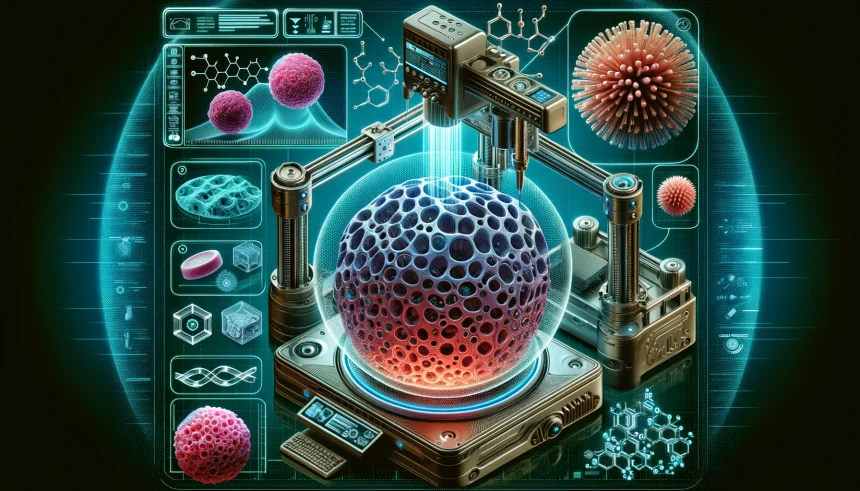The breakthrough of 3D printing has not just reshaped industries; it has catalyzed a paradigm shift in biomedical exploration, particularly through the advent of 3D-printed spheroids. These cellular assemblages, mirroring the complexity of human tissues more closely than flat cell cultures ever could, mark a significant stride in the nuanced understanding and treatment of various medical conditions.
Decoding the Essence of 3D-Printed Spheroids
At their core, 3D-printed spheroids are intricate cellular collectives birthed from the advanced realms of 3D bioprinting. This realm utilizes bioinks, a new class of materials teeming with living cells, to architect layers upon layers of cell structures in three dimensions. This departure from the planar landscapes of 2D cultures to the voluminous realms of 3D allows cells to proliferate in every direction, akin to their natural growth patterns in the human body.
The 3D Advantage
The leap from two dimensions to three isn’t just spatial—it’s fundamentally transformative. Within these 3D spheroids, cells engage in complex dialogues, forge robust connections, and establish nutrient gradients, emulating the intricate dance of life that unfolds within our tissues. This rich, three-dimensional tapestry offers a more authentic stage for studying the ballet of cellular interactions and the body’s chorus against various stimuli.
The Broad Spectrum of 3D Spheroid Applications
The implications of 3D-printed spheroids stretch across the biomedical landscape:
- In Drug Discovery and Toxicology: They emerge as potent proxies for human tissues, offering a more reliable canvas for testing pharmaceuticals and reducing the ethical and logistical complexities tied to animal testing.
- For Disease Modeling: Spheroids derived from patient-specific cells open windows into the labyrinth of various diseases, allowing for a deeper understanding and more targeted therapeutic approaches.
- Within Tissue Engineering: These cellular conglomerates lay the foundation for crafting larger, more complex tissue models, inching us closer to the realms of regenerative medicine and organ transplantation.
- Towards Personalized Medicine: By tailoring spheroids to individual genetic profiles, they become powerful tools for predicting treatment outcomes, heralding an era of treatment strategies that are as unique as the individuals they aim to heal.
Navigating the Challenges
Despite their promise, the journey of 3D-printed spheroids is fraught with hurdles—from perfecting bioinks that cater to a diverse cellular cast to ensuring these bio-fabricated tissues thrive long-term. The quest also involves scaling these innovations from the lab bench to clinical settings, a leap that requires both technological ingenuity and regulatory navigation.
Looking Ahead
3D-printed spheroids stand at the vanguard of biomedical research, offering a lens into the cellular microcosm that’s more precise and physiologically relevant than ever before. As we continue to harness and refine this technology, it beckons a future where the mysteries of human biology are unraveled, and personalized, effective treatments become the cornerstone of medical care, promising a horizon where health is not just managed but optimized.








